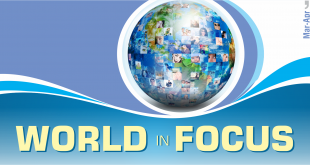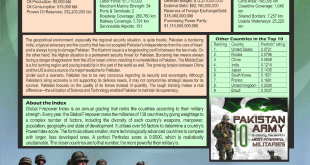The Bretton Woods Institutions are the World Bank and the International Monetary Fund (IMF), established at a meeting of 43 countries in Bretton Woods, New Hampshire, USA, in 1944. The World Bank and the IMF are seen as wielding tremendous power and influence, but exclude the voices of developing countries most adversely affected by financial and trade policies. Equally important in the international development strategy is the need for a reform of the governance structure of the Bretton Woods Institutions. Not only should they be made more transparent, consultative and inclusive but also they should be more responsive and appreciative of the peculiar needs of developing countries. In consonance with the principle of ownership, the greater infusion of developing countries in the governance structure of Bretton Woods Institutions would undoubtedly allow them to take advantage of the local knowledge that developing countries can bring to the work of the institutions. To remain legitimate, effective and accountable, the Bretton Woods institutions must align representation with countries’ relative economic weight and systemic importance.
‘Bretton Woods’ has become almost synonymous with the fixed exchange rate system that prevailed from the time of the establishment of International Monetary Fund (IMF) until the abandonment of fixed rates in 1973. However, the visionaries at the Bretton Woods Conference had broader objectives in mind. As stated in the IMF’s Articles of Agreement, they were striving toward a system that would ‘promote international monetary cooperation’, ‘facilitate the expansion and balanced growth of international trade, and to contribute, thereby, to the promotion and maintenance of high levels of employment and real income’. They also aimed to ‘promote exchange stability … maintain orderly exchange arrangements among members and … avoid competitive exchange depreciation’. At the same time, they wanted to ‘assist in the establishment of a multilateral system of payments in respect of current transactions between members and in the elimination of foreign exchange restrictions which hamper the growth of world trade’. As these goals suggest, the purpose of ‘Bretton Woods’ was, above all, to establish a more stable and prosperous world economy, and the role of the IMF would be to help promote the preconditions for this.
The IMF is still needed to help countries resolve payments problems in an internationally responsible way, to address liquidity crises, and to act as a crisis manager. Does this mean that crisis prevention should be at the core of the IMF’s work? Should it deepen its efforts to collect and disseminate information to investors and markets, further covering indicators of financial vulnerability as well as macroeconomic fundamentals? To what extent should its resources be expanded to enable it to provide liquidity, and under what circumstances should the Fund provide backstop financing for countries?
Indeed, the environment in which the Fund operates has changed, but the instruments at its disposal have not. Can the IMF perform within its current governance structure, or does it require a change in the governance reform?
Does the Fund have the internal governance and risk-control mechanism to deal with capital account crises? (If the preferred creditor status should be re-examined in this new evolution, if we deal with fiscal policies difficulties and not balance of payment problems.) How can disparities in economic weight and financial contributions be reconciled with the need for more inclusive decision-making in international institutions and arrangements (for example, in IMF voting)? How emerging economies can be best represented in the international financial architecture, recognizing that improving their development prospects is a principal aim of global financial governance? Will the G20 serve as a basis, perhaps, in combination with regional forms of governance?
Another important challenge facing the global monetary system is the emergence of digital currencies. It seems that the current debate about digital currencies offers a unique opportunity to integrate monetary innovation and reform of the system. Indeed, digital currencies represent important monetary innovations and have reinvigorated interest in and debate about the notion and the very meaning of money. They promise to deliver important economic benefits and choice amid possible alternatives to unsteady national currencies, greater financial transaction efficiency and reduction of transaction costs. At the same time, they represent considerable risks and aim to disrupt and challenge existing monetary and financial arrangements. As such, digital currencies are likely to have a profound impact on the international financial architecture.
Whether digital currencies do indeed occupy a key role in the new monetary system, the fact is that, in an economic world now dominated by the rapid development of financial transactions, the absence of a credible solution to the problem of international liquidity management, and the lack of a global instrument allowing the world to adapt the level of the international reserves to its needs, presents a challenge to the global economy. As it is clearly difficult for national central banks to adjust their monetary stance to reduce the risks resulting for the rest of the world from these externalities, the need for an institution facilitating a common evaluation of the global situation and the adoption of the appropriate corrective measures is made more and more pressing. Ideally, such an institution should be equipped with the possibility to add to insufficient global liquidities, or to withdraw part of them in the opposite situation. This is what John Keynes had in mind in the early 1930s when he said: ‘The ideal system would surely be The New Global Governance: Towards a More Sustainable Framework in the foundation of a supranational bank that would have similar relations with the national central banks to those that exist between each central bank and its subordinate banks.’
It might be unrealistic in the current global political environment to transform the IMF into a global ‘central bank of central banks’. But it would be also plainly unrealistic to think that the multipolar/multi-currencies world of the next decades could continue accepting a state of affairs when global liquidity is determined by the monetary policy of a country which, in full legitimacy, refuses to take into account the global implications of its economic policy decisions.
World Bank: An Introduction
The World Bank is a vital source of financial and technical assistance to developing countries around the world. It is not a bank in the ordinary sense but a unique partnership to reduce poverty and support development. The World Bank Group comprises five institutions managed by their member countries.
Established in 1944, the World Bank Group is headquartered in Washington, D.C. It has more than 10,000 employees in more than 120 offices worldwide.
The World Bank Group has set two goals for the world to achieve by 2030:
1. End extreme poverty by decreasing the percentage of people living on less than $1.90 a day to no more than 3%.
2. Promote shared prosperity by fostering the income growth of the bottom 40% for every country.
The World Bank is like a cooperative, made up of 189 member countries. These member countries, or shareholders, are represented by a Board of Governors, who are the ultimate policymakers at the World Bank. Generally, the governors are member countries’ ministers of finance or ministers of development. They meet once a year at the Annual Meetings of the Boards of Governors of the World Bank Group and the International Monetary Fund.
Role of China and the US
To remain legitimate, effective and accountable, the Bretton Woods institutions, established in the very different world of 1944, must align representation with countries’ relative economic weight and systemic importance.
What about a scenario where emerging economies, led by China, decide to replace, rather than reshape, today’s institutions?
Already, China has spearheaded the creation of two multilateral development banks — the Asian Infrastructure Investment Bank and the New Development Bank. China’s initiatives have fewer resources than the World Bank, but they are big enough to finance significant infrastructure projects.
In addition, regional facilities have been put together to provide support at times of financial distress. The Chiang Mai Initiative pools the foreign-exchange reserves of the ASEAN+3 countries — approximately $240 billion. And BRICS countries can rely on a Contingency Reserve Arrangement of approximately $100 billion.
These facilities would help with occasional liquidity crunches rather than offering a more extensive financial safety net which remains the IMF’s prerogative. But this facility can be expanded if necessary.
Any attempt to reform the global economic order might clash with the US’s rethinking of its own involvement in world affairs. Trump has made clear his distaste for multilateral institutions, and he has been explicit that the US should no longer bankroll the provision of global public good.
An attack on financial multilateralism would deal a massive blow to the global economic order.
But partial US disengagement need not spell disaster. A year is probably not long enough to deal with the disruption that a reluctant hegemon may create, but it might reveal the scale of that disruption and the capability of other stakeholders to adapt.
 Jahangir's World Times First Comprehensive Magazine for students/teachers of competitive exams and general readers as well.
Jahangir's World Times First Comprehensive Magazine for students/teachers of competitive exams and general readers as well.



